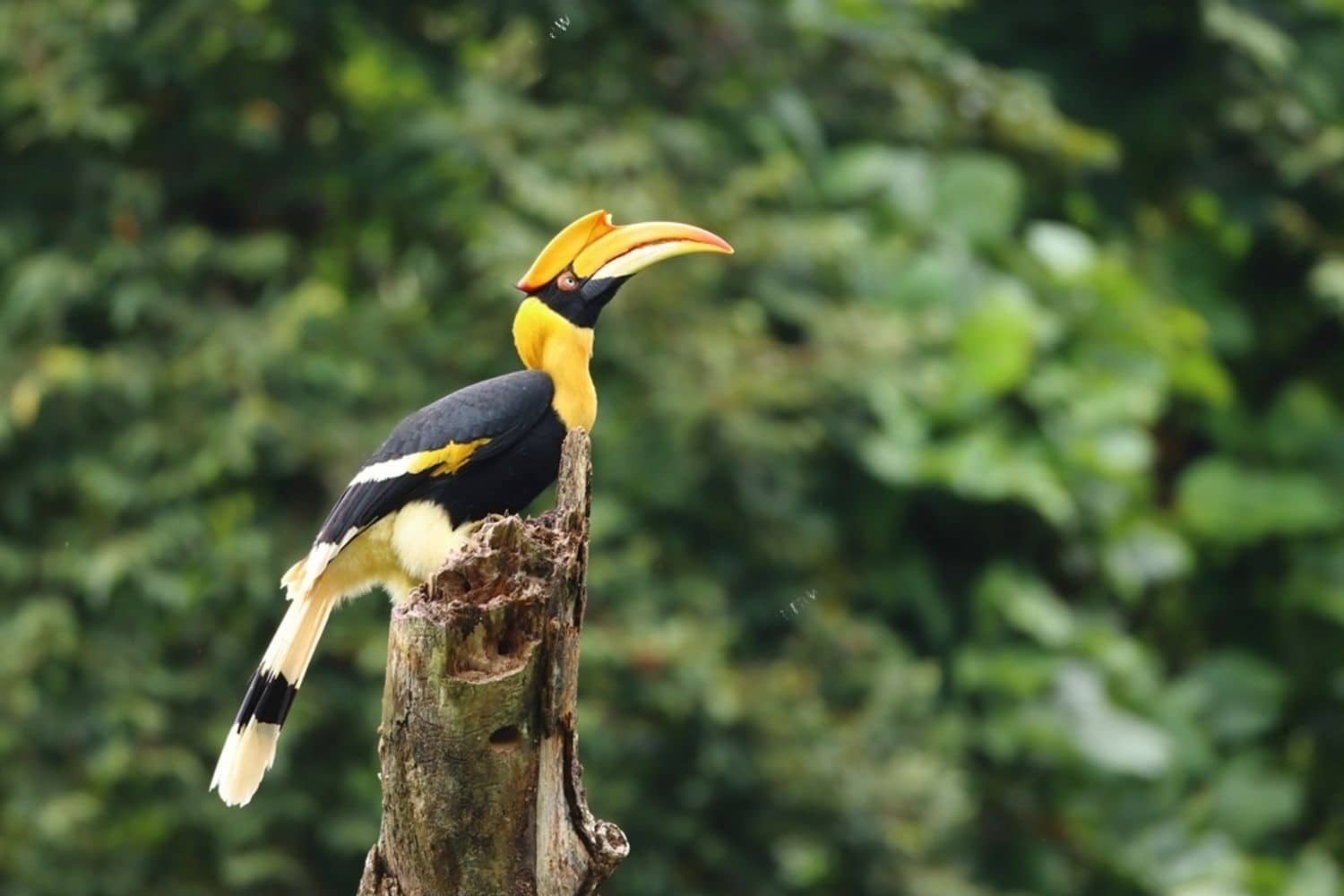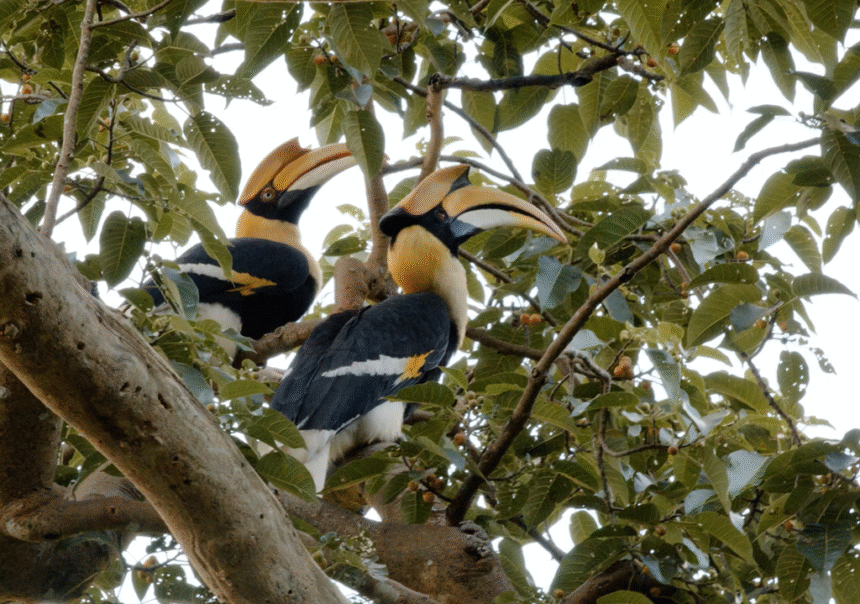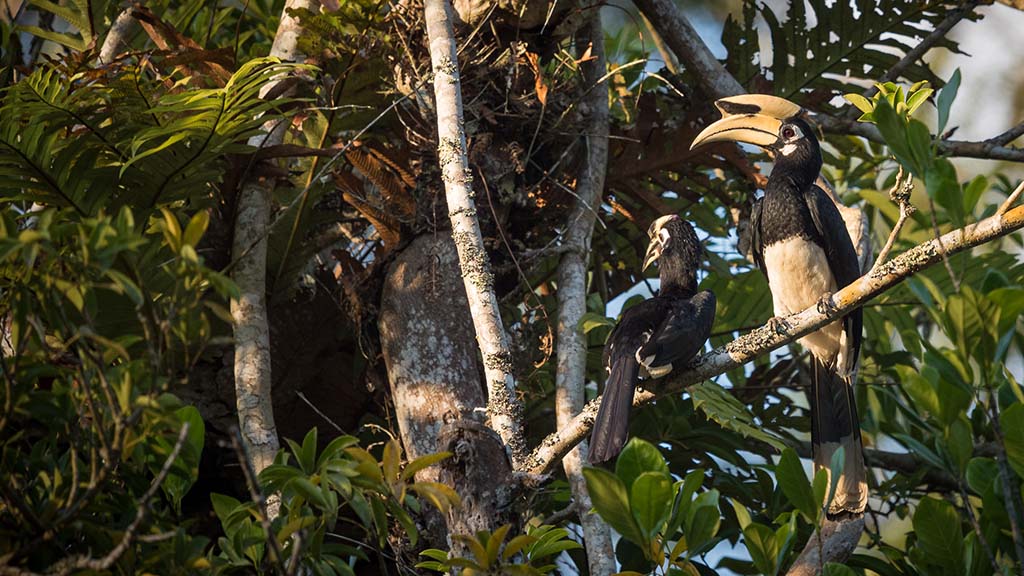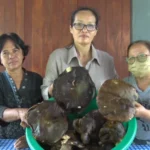CHIANG MAI – The Ministry of Natural Resources and Environment has taken quick action after social media posts raised concern for a family of hornbills living in Omkoi Forest, Chiang Mai.
The birds have been nesting and raising their young in a tree now surrounded by fields set for rotational farming by local villagers. People worry this may disturb the rare birds, which are already at risk of disappearing. Residents have shown strong support for efforts to protect the hornbills.
The situation came to light after Facebook users Khajohnpat Boonprasert and Jarunsak Loymee shared posts about finding a hornbill family nesting and raising chicks in Ban Tee Nuea, Na Kian sub-district, Omkoi.

Seeing these birds breed here is a hopeful sign for their recovery in the area. The posts showed concern because nearby land is about to be cleared for farming, with some trees already cut down. While the villagers don’t hunt or mean harm, the lack of proper land management could threaten the hornbills’ home, especially while chicks are still in the nest.
In response, Jatuporn Buruspat, Permanent Secretary of the Ministry of Natural Resources and Environment, ordered an immediate inspection. Officials, including the Omkoi District Chief and the head of the Omkoi Wildlife Sanctuary, visited Ban Tee Nuea.
They found the hornbills’ nest in a tree near the village, with chicks still inside. Staff spoke with locals about the importance of hornbill conservation and explained how these rare birds are important to the ecosystem.
They asked the community not to hunt, cut trees, or enter the hornbills’ habitat. Villagers promised not to disturb the nesting area and agreed to help protect the birds.
The Ministry will keep a close watch on the situation and stands ready to introduce extra measures if needed. The goal is to make sure the hornbills and their habitat remain safe, so these rare birds can continue to thrive in the wild.
Hornbills in Chiang Mai
Hornbills stand out among Chiang Mai’s wildlife, thriving in the lush forests and parks around this northern Thai city. These birds are easy to spot, thanks to their large size, colourful feathers, and the unique casque on top of their beaks. Hornbills play an important part in the local environment and hold a special place in the culture of the region.
The tropical climate and varied habitats in places like Doi Inthanon and Doi Suthep National Parks support several types of hornbill, including Great Hornbills (Buceros bicornis) and the Oriental Pied Hornbills (Anthracoceros albirostris).
Great Hornbills are known for their striking yellow and black feathers and wide wingspans that can reach up to five feet. Their calls and strong wingbeats echo through the trees, making them hard to miss as they move above the canopy.
These birds help the forest grow by eating fruit and spreading seeds far and wide. Oriental Pied Hornbills, which are smaller and more flexible in their diet, sometimes venture near villages, feeding on insects, small animals, and fruit.
In Chiang Mai, hornbills appear in local stories and are often seen as symbols of loyalty and strength because they mate for life. Projects like the ones at Elephant Nature Park work to protect these birds from losing their homes to logging and illegal hunting.
Hornbills attract birdwatchers from around the world, with many tours offering a chance to see them in the wild. Still, loss of habitat threatens their future, so local efforts to protect the forests are key to keeping hornbills around for generations to come.
Related News:
Elephant Rescued By Famous Monk in Chiang Mai Injures Handler
















